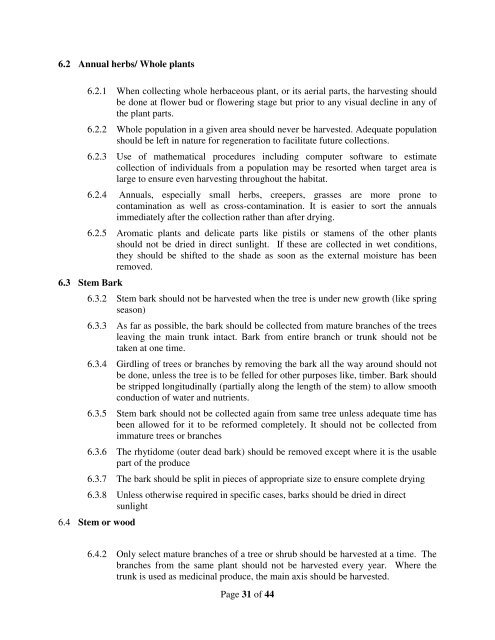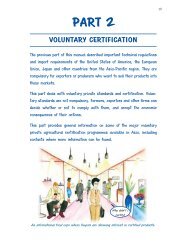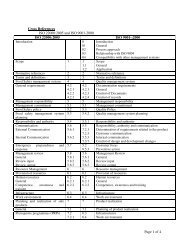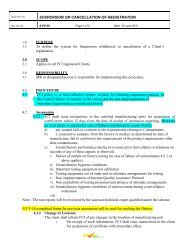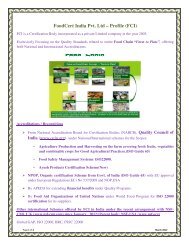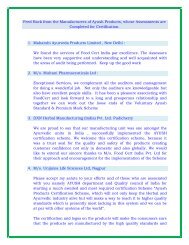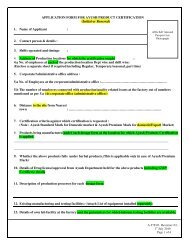Standard for Good Field Collection Practices - NMPB
Standard for Good Field Collection Practices - NMPB
Standard for Good Field Collection Practices - NMPB
You also want an ePaper? Increase the reach of your titles
YUMPU automatically turns print PDFs into web optimized ePapers that Google loves.
6.2 Annual herbs/ Whole plants<br />
6.2.1 When collecting whole herbaceous plant, or its aerial parts, the harvesting should<br />
be done at flower bud or flowering stage but prior to any visual decline in any of<br />
the plant parts.<br />
6.2.2 Whole population in a given area should never be harvested. Adequate population<br />
should be left in nature <strong>for</strong> regeneration to facilitate future collections.<br />
6.2.3 Use of mathematical procedures including computer software to estimate<br />
collection of individuals from a population may be resorted when target area is<br />
large to ensure even harvesting throughout the habitat.<br />
6.2.4 Annuals, especially small herbs, creepers, grasses are more prone to<br />
contamination as well as cross-contamination. It is easier to sort the annuals<br />
immediately after the collection rather than after drying.<br />
6.2.5 Aromatic plants and delicate parts like pistils or stamens of the other plants<br />
should not be dried in direct sunlight. If these are collected in wet conditions,<br />
they should be shifted to the shade as soon as the external moisture has been<br />
removed.<br />
6.3 Stem Bark<br />
6.3.2 Stem bark should not be harvested when the tree is under new growth (like spring<br />
season)<br />
6.3.3 As far as possible, the bark should be collected from mature branches of the trees<br />
leaving the main trunk intact. Bark from entire branch or trunk should not be<br />
taken at one time.<br />
6.3.4 Girdling of trees or branches by removing the bark all the way around should not<br />
be done, unless the tree is to be felled <strong>for</strong> other purposes like, timber. Bark should<br />
be stripped longitudinally (partially along the length of the stem) to allow smooth<br />
conduction of water and nutrients.<br />
6.3.5 Stem bark should not be collected again from same tree unless adequate time has<br />
been allowed <strong>for</strong> it to be re<strong>for</strong>med completely. It should not be collected from<br />
immature trees or branches<br />
6.3.6 The rhytidome (outer dead bark) should be removed except where it is the usable<br />
part of the produce<br />
6.3.7 The bark should be split in pieces of appropriate size to ensure complete drying<br />
6.3.8 Unless otherwise required in specific cases, barks should be dried in direct<br />
sunlight<br />
6.4 Stem or wood<br />
6.4.2 Only select mature branches of a tree or shrub should be harvested at a time. The<br />
branches from the same plant should not be harvested every year. Where the<br />
trunk is used as medicinal produce, the main axis should be harvested.<br />
Page 31 of 44


